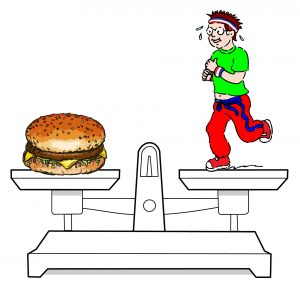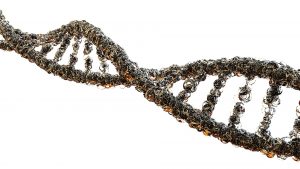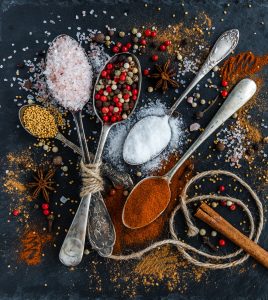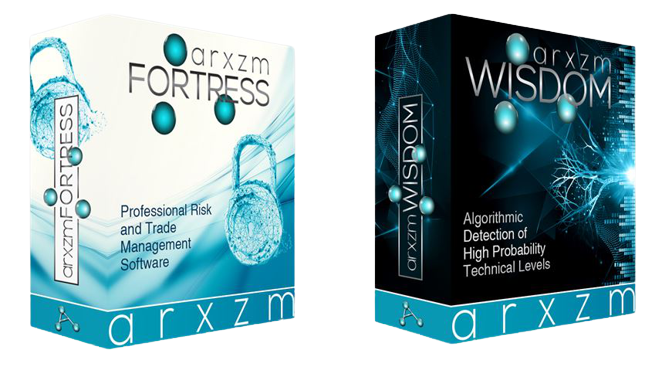
Applying Modern Science and Portfolio Management Principles to Optimize Baseline Health
The health and well-being movement has continued to advance over the years in true juggernaut fashion. The importance of living a healthy lifestyle has been drilled into us ad nauseam and as the science continues to pour in the health“bar” has been raised so high it is practically unattainable. No matter to what extent you try to live a healthy lifestyle, you’re likely still aware of all the deficiencies between how you actually live and what you know you should be doing (or not doing).
You should have ordered the side salad – not fries.
You should have made time to exercise more this week.
You shouldn’t have had a second (or first?) serving of dessert.
And so on.
For many, there is this disconnect between the lifestyle that we are comfortable living and the level of health we know we could achieve if we ate and exercised more diligently. Yet, unless you have the discipline of a Buddhist monk, consistently living that perfect healthy lifestyle is simply unrealistic.
After continual abandonment of the health protocols I set out to achieve, I realized that a more realistic and sustainable approach to healthy living had to be adopted. Not only was I not achieving my health goals but I was beating myself up for failing to follow these strict regimes. And let’s face it, eliminating things in your diet which you enjoy isn’t really that fun at all.
Does it have to be so black and white? Do we have to decide between living healthy and living the lifestyle we are comfortable with? Can we have our cake and eat it too?
Typically when looking for a solution to a problem you draw upon your existing knowledge/skill set. My problem was that I wanted to achieve a better baseline level of health but I didn’t want to live my life following a health regime that I wasn’t willing/able/motivated to pursue. In other words, I was living a lifestyle above my desired health baseline – so I figured I needed to periodically rebalance.

Rebalancing is a technique portfolio manager’s use for strategic asset allocation. It is the process of maintaining a predefined percentage of a particular asset class by periodically buying or selling that asset to return it to the baseline. You can probably see where I’m going with this.
To maintain my lifestyle I was comfortable living (which is generally healthy but not stringent) and to optimize my health to a level I hoped to achieve, I needed to periodically return to the baseline (or somewhere in the vicinity). So I created a rebalancing period – one week a month of a stringent health regime. Similar to maintaining an asset allocation of a portfolio, this week of “purity’ is my efforts to rebalance my health to a healthier baseline.
I was driven by the idea that if current scientific findings have stripped us of so many foods and practices that we thought were once healthy or at least benign, then surely there are other new scientific findings that can be applied to quickly and efficiently optimize our health. These practices that I apply over short periods to “rebalance” my health are discussed below and the benefits of adopting this approach are many.
Benefits of Adopting a Rebalacing Approach
.
The bottom line is that you are taking a period of time that you can tolerate living a much healthier lifestyle than you normally do. I “rebalance” one week per month and after years of research and self-experimentation, here’s what my week typically includes.
-
Intermittent Fasting with Exercise
-
Immunomodulation
-
Diet Modifications
-
Supplements
These practices will be discussed in detail below. They are based on the guiding principle that the best way to maintain a healthy system is to regularly activate the body’s own defence and repair mechanisms. My rebalancing period aims at activating these pathways in a quick and efficient manner. Although these repair pathways are the focal point of my regime, I also target the reduction of inflammation which can lead to serious health conditions when it has become chronic. Finally, I attempt to reduce my susceptibility to the leading western causes of death: heart disease and cancer. Lofty goals – here’s how I go about it.
Intermittent Fasting with Exercise – Genetically Activating Repair and Cleansing Pathways

“Caloric restriction”, “Time Restricted Eating”, “Intermittent Fasting” – they all achieve the same results – stressing the system through nutrient deprivation. When a cell is deprived of nutrients via caloric restriction (fasting), genes detect these nutrient states and activate enzymes (mTOR and AMPK kinases) which adjust the cells metabolism to survive.
These kinases can switch metabolism between anabolic and catabolic pathways. When resources (energy or amino acids) are plentiful, mTOR is activated and switches our metabolism to an anabolic state. In this state cell growth and proliferation are activated. Conversely, when the body is under “stress”; (stress in this instance considered as low energy or oxygen availability or high temperatures, opposed to stress that involves the release of cortisol), mTOR is inhibited and AMPK activates catabolic metabolic processes to sequester resources – our default survival mode is activated.
One of the processes that is activated in this survival state is “Autophagy” which essentially translates to “self eating”. Autophagy allows the cell to marshal its resources to deal with the stressor. In the process, damaged cellular components, damaged proteins, and even pathogens are broken down and removed from the body. Our body is continually misfolding proteins, senescent cells are being created (cells that cease to divide yet are metabolically active becoming pro-inflammatory), and we are always under attack from pathogens. Therefore, the activation of this pathway is critical to remain healthy and prevent serious disease including inflammatory diseases, infections, cancer, neurodegeneration, aging, and heart disease.

Yet if we are continually fueling our system by eating at regularly scheduled intervals, we will seldom activate this important pathway; that’s were fasting comes in.
There are many methods of fasting and so long as you are depleting your system of fuel you will activate autophagy. I have trouble with longer periods of fasting so prefer what is referred to as the 16-8 schedule. This means you have a 16 hour window of a fasted state and an 8 hour consumption window. A common approach to this is to end consumption at 8pm and withhold from eating until 12pm the following day. Certainly, fasting can be taken to more extreme periods; however the 16-8 schedule best suits my physiology and lifestyle.
Because I’m not Ghandi and can only tolerate this shorter fasting period, I make efforts to enhance the activation of autophagy through exercise and supplementation (discussed later).

Exercising during the fasting period contributes to the activation of autophagy by further depleting our energy reserves and it also actives autophagy through other pathways as genes that detect lowered oxygen levels promote the activation of autophagy. Thus by combining fasting and exercise we enhance the overall effect during a short fasting period.
Immune System Modulation

In addition to clearing out damaged proteins, cellular components and pathogens via autophagy I also target my immune system during my rebalancing week. The immune system is critical to protecting us from pathogens yet it can also be the cause of major bodily harm through autoimmune diseases and chronic inflammation. Inflammation can result in a number of serious diseases including cancer and heart disease so efforts to reduce it are certainly worthwhile. Indeed, we want to reduce the inflammatory pathways of the immune systems while activating our defences that destroy pathogens, cancer and senescent cells. How can we do this?
We are already part way there as there is evidence that both exercise and fasting can strengthen the immune system; however, we can also add supplements for immunomodulation – amplifying our defences and reducing inflammatory pathways.
Although there are a number of anti-inflammatory supplements on the market – I primarily rely on polypore mushrooms for immunomodulation. The common type of polypore mushroom used for this purpose is Reishi; however, a number of species are capable of immunomodulation.
The amazing thing about these polypore mushrooms is that they achieve exactly what we’re trying to accomplish – increase our defences and decrease inflammation; that is, they are immunomodulators. They dampen the cytokine signals that create chronic inflammation in the body and also activate immune effector cells, such as macrophages and natural killer cells which destroy pathogens and cancers in our body. Natural killer cells also attack pro-inflammatory senescent cells eliminating them from our body. These mushrooms are well tolerated, affordable, and have many health benefits that extend beyond immunomoduation. You can read more about them in the Supplement Section below.
Diet Modifications

My goal for diet modifications during the rebalancing period are to make significant improvements to my regular eating habits and to incorporate eating patterns that are far too difficult to sustain over longer periods. For some, this could mean cutting out soda, eliminating deep fried foods or perhaps skipping out on desserts – anything that makes considerable improvements over your typical eating patterns.
If you already adopt a generally healthy diet you’ll have to consider some more restrictive diets for a rebalancing phase. I alternate between a ketogenic diet and a vegetarian diet that usually has an exclusion/experimental element. Both have no refined sugar and both keep proteins to a minimal amount.
Ketogenic Diet
The Ketogenic Diet has become fairly popular as of late. However, unlike most mainstream diets, this is not a fad diet but is supported by an ample amount of science. Without digging too deep into it, the idea is to hack your metabolism by limiting glucose (sugar and carbohydrates). Without sugar, our body switches its metabolism to burn fat as a primary energy source. The fatty acids are broken down by the liver into ketone bodies which we use as our primary energy source. The ketogenic diet inhibits mTOR (promotes autophagy), increases our endurance and mental clarity, is neuroprotective, improves mitochondrial health, and our lipid profile to protect against cardiovascular disease and can even help control epileptic seizures.
It has a macronutrient profile of approximately:
60 percent Fat
30 percent Protein
10 percent Carbohydrates.
Despite the reported health benefits, for myself, the Ketogenic Diet is simply far too difficult to practice frequently (both from a social and dietary perspective). For those reasons, I rely on ketosis as a one week rebalancing diet only.
TIP – TO SIGNIFICANTLY SPEED UP YOUR ENTRY INTO KETOSIS TRY SUPPLEMENTING WITH BERBERINE WHICH IS PROFILED IN THE SUPPLEMENT SECTION BELOW
Vegetarian Diet – Elimination and Experimental Approach
It’s important to keep proteins at a minimal maintenance-only level during the rebalancing period. This is because the presence of amino acids (what proteins are made of) can activate mTOR and inhibit autophagy. Because of this, my second diet I cycle between is a vegetarian diet (with minimal protein). It focuses on eating a diverse range of vegetarian dishes with a primary focus on low-glycemic fruits and vegetables. Absolutely no refined sugar is taken in during this diet (yes, that’s as hard to accomplish as you think!).
I also like to experiment during this dietary phase and I will either focus on eliminating certain foods or add a dietary focus. For example, I may cut out dairy or perhaps focus on replenishing my microbiome by regularly consuming large amounts of fermented foods and probiotics. The idea is to experiment and above all make improvements to your regular diet to help rebalance to a more optimum baseline health level. Expose your body to new things – remove things that may be causing harm – you get the idea.
Vitamins and Supplements

Supplements can be expensive yet very effective. Because I have a fairly balanced and diverse diet I generally don’t rely on external sources of vitamins. Based on results of my genetic testing, I do however take Krill Oil and Vitamin D daily because of my fat metabolism and efficiency of processing Vitamin D (I highly recommend getting some genetic testing done).
There are so many different supplements on the market it can be overwhelming trying to decide which to take. I’ve narrowed it down to a few supplements which I think have the best bang for buck. They are supplements that support the goal of my rebalancing period of efficiently activating autophagy, they have significant anti-inflammatory effects and other direct effects at combatting cancer and cardiovascular disease among other health benefits as well.
In my opinion, these are the powerhouses of the supplement world and together with a good balanced diet are the only supplements required. Here’s a brief description of what I take and some sources to add it to your regime if you think it would be a good fit.
Polypore Mushrooms (Reishi et al.)
There’s good reason Reishi has been referred to as the “Mushroom of Immortality” or “10,000 year Mushroom”. We’ve already looked at the immunomodulation properties of these mushrooms, decreasing inflammation while increasing our macrophages and natural killer cells to fight pathogens and cancers. This alone is an excellent reason to supplement with polypore mushrooms; however, they have many more excellent health benefits.
Reishi and other polypore mushrooms have a wide range of biologically active medicinal components including polysaccharides and triterpenoids, sterols, petides and other trace elements. These compounds have been linked to a number of important pharmacological effects. Polypores have been shown to be powerful antioxidants, hypolipidemic (fat lowering), increase good HDL cholesterol, are both liver and kidney protective, have anti-aging properties, are anti-gylemcic, have direct anti-tumor activity (in addition to immunomodulation) and they can improve sleep quality and fight chronic fatigue. They are well researched and have been used medicines for thousands of years. They really are a versatile powerhouse supplement to add to your arsenal.
Sources
There are many types of polypore mushrooms. The most common are Reishi (several mushrooms of the genus Ganoderma ). There are however a variety of polypore mushrooms that have similar yet varying effects. For that reason I recommend a diversity to maximize medicinal properties.
Option 1
The best product on the market I’ve found to use as a general polypore supplement is Host Defense, MyCommunity Comprehensive Immune Support. It includes 17 species and is one of Paul Stamets products, a leader in the medicinal mushroom field and his products are all extensively researched, sustainably sourced and are of high quality.
Option 2
Because of the ubiquitous nature of medicinal polypore mushrooms, chances are you may find one or more of these species growing in your area on dead wood. With some research and practice they are quite easy to identify. A compound called chitin (similar to insects shell) locks up the medicinal compounds inhibiting their bioavailability, so if you are going to harvest your own you will need to make both a water based decoction and alcohol based tincture to extract both the water soluble and non-soluble medicinal components. Don’t worry though, the process is quite simple.
For an alcohol tincture, fully submerge the mushrooms in an alcohol (I use vodka) for a minimum of 6 weeks. Decoctions are simply made by simmering the mushrooms in hot water (make a tea). Often people make the tincture first, then use the same mushrooms to make a decoction. You will have to investigate which medicinal species are found in your particular area, here are some found in my region:
Artist’s Conk (Ganoderma Applanatum)
West Coast Reishi ( Ganoderma Tsugae and Oregonenses)
Tinder Conk, or Amadou, (Fomes Fomentarius)
Red Belted polypore (Fomitopsis Pinicola)
Birch Polypore (Piptoporus Betulinus)
Turkey Tail (Trametes Versicolor, Coriolus Versicolor)
Sulforaphane
Sulforaphane is a compound found in cruciferous vegetables. Although eating a diet high in cruciferous vegetables will increase your exposure to sulforaphane, to get its concentration up to therapeutic levels I use a supplement. My primary purpose of supplementing with sulforaphane during my rebalancing week is because it directly activates autophagy.
You may be wondering why we would need to activate autophagy with a supplement if we are already activating it through exercise and intermittent fasting. It is important to keep in mind that autophagy is a complex process. There are different types of autophagy and different activation pathways. Moreover, is not always a global response, as different cell types can respond differently. So if our goal is to optimize this process over a short period of time, we need to activate it through a number of pathways.
Supplementation with sulforaphane is very effective as it activates autophagy in many cell types throughout the body, and also activates the heat shock response (another beneficial process as heat shock proteins act as “chaperones” – helping maintain proper protein folding and stabilizing partially folded proteins). Yet, beyond the activation of autopaghy, sulforaphane is a remarkable compound with several other important medicinal properties.
Sulforaphane has shown to have anti-tumor properties across several cancer types. It also has potent anti-inflammatory and anti-oxidant effects. It can protect from neurodegenerative diseases such as alzheimers, cardiovascular disease and is also kidney protective. Sulforaphane is also known for its anti-aging effects including the activation of FOXO gene.
Sources
Although occurring in all cruciferous vegetables, the most concentrated source of sulforaphane is in broccoli sprouts. You can purchase stabilized sulforaphane online or get your dose through consuming sprouts. Sulforaphane supplments are a little on the pricey side but they are very convenient and you can easily get a high dose as compared to consuming broccoli sprouts only. I tend to rely on supplements during my rebalancing week and consume sprouts during my non-rebalancing week.
Option 1
Option 2
Sprouting is simple and you can find many instructions online (note you don’t need to buy a sprouter, just use a jar and an elastic and a cheese cloth for a lid). Also note you can increase the amount of sulforaphane through heat preparation. Simply heat your sprouts to 70degress celcius for 10 minutes (or 60 degrees celcius for mature florettes). This is somewhat tedious but worthwhile as it results in about a 3x increase! A link to the original study can be found here.
Berberine
The third go-to supplement I rely on is Berberine. Berberine is an interesting compound especially because it has been shown to be as effective as prescription drugs at controlling blood sugar (see Berberine vs Metformin). This quality was my primary interest in Berberine not because I’m diabetic but by decreasing blood glucose levels Berberine could significantly increase the speed of entering Ketosis.
Because I rely on a short fasting period, a supplement which decreases blood glucose levels makes my fasting much more efficient. If that’s not enough, like Sulforaphane, Berberine can also directly activate autophagy by activating AMPK. Yet when you consider the other medicinal properties of Berberine, including it as a supplement is a “no brainer”
Berberine is both an Anti-inflammatory and an Anti-oxidant and has been reported to have several direct anti-cancer effects including limiting proliferation and metastasis. Berberine also has a neuroprotective effect and helps with depression, memory and the clearing beta-amyloid plaques associated with the development of Alzheimers disease. Berberine has a strong impact on metabolic syndrome and can improve insulin sensitivity, lower triglycerides and total cholesterol and promotes weight loss. Berberine also has impressive effects which are important for cardiovascular health. Activated AMKP in heart cells is directly protective but it also helps control arrhymias, break clots (thrombolysis), reduces blood pressure (vasorelaxent) and reduces atherosclerosis. It is another supplement that clearly has superior “bang for buck”.
Sources
Berberine is a compound found in several plant species including Barbery (Berberis vulgaris), Oregon Grape (Mahonia aquifolium), Tree Tumeric (Berberis aristata), and Goldenseal (Hydrastis canadensis). Berberine is therefore fairly accessible so it is important to source good quality and reliable products. The absorption of Berberine isn’t very efficient but it is reported that a minimum dose of 1000mg is required to exert it’s medicinal effects.
Be sure to get a product that uses an extract opposed to one that is just encapsulated root powder.
Curcumin
Finally, curcumin ticks all the major boxes that I look for in a supplement as well. It activates autophagy, is a powerful anti-oxidant and anti-inflammatory, and it has direct anti-cancer properties. It also has a very diverse range of other medicinal benefits including effects on mood such as protecting against stress and preventing anxiety and depression. Curcumin is reported to have anti-aging effects protecting against cognitive decline and arthritis. It is also protective of the heart and blood vessels, kidney and liver. Finally, there is some evidence that in animals curcumin increases muscle recovery and prevents muscle wasting – something one is somewhat susceptible to during fasting protocols. Curcumin is also synergistic with sulforaphane, so the cumulative effects of both these supplements will be enhanced when taken together.
Sources
Curcumin is a compound found in turmeric which in itself is an easily accessible and affordable product. However, the bioavailability of curcumin in turmeric is very low. It has been found that black pepper enhances the bioavailability of curcumin in turmeric. You will find many products that are turmeric combined with black pepper (piperine). However, some manufactures have used other technologies to significantly increase the bioavailability of curcumin and are discussed below.
Option 1.
One method has been to bind curcumin to a phospholipid (the same compound that increases the bioavailablity of EPA and DHA in Krill oil vs fish oil). The brand is called Meriva and there are a couple manufacturers that use the patented technology.
Click here to read more about Meriva.
Option 2.
The other technology uses very small particles of curcumin that are stabilized when dispersed in water.
You can read more about Theracumin by clicking here.
Wrap up
I know how difficult it is to stay healthy especially as science continues to move the bar limiting what we once thought was acceptable. It seems that most things we engage in now have some negative health consequences. Yet before damning the scientific findings that too many hamburgers and that side of fries are indeed “bad” for us; we can take a similar approach by applying other scientific findings to strategically optimize our health in a manner that is sustainable and that easily meshes with our lifestyle.
Hopefully this rebalancing approach resonates with someone to improve their own health. My routine was presented as an example. It’s based on what I believe is the best rebalancing approach considering our current scientific understandings and is tailored to suite my lifestyle and physiology.
Any number approaches are possible. Some may want to rebalance for a 2 week period using only fasting and supplements. Some may want to rebalance one day a week. Etc..
The overarching concept is simple. It is tolerable short-duration improvements to the way you normally live. Yet this seemingly simple approach has the potential to blossom into a complete lifestyle overhaul. Soon you’ll likely find that some these new healthy practices begin migrating into you regular routine. For example, you may find you don’t have to eat as much or as frequently. You may find your energy levels increase if you limit your intake of a certain food. You may find that your focus and resilience to stress is considerably improved after a workout. Or perhaps you discover that you prefer healthy alternatives to you regular meals.
As the practices from your rebalancing period begin to integrate into your regular routine you will find the need and desire to increase the intensity of your rebalancer; that is, your baseline naturally shifts. So, in a stepwise manner, you systematically make improvements to your overall health and lifestyle simply by beginning with the incorporation of a short and tolerable rebalancing period.
References


